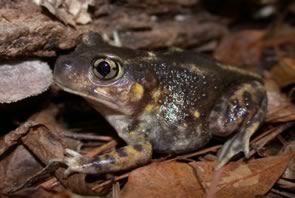
Scaphiopus holbrookii
Photo by JD Willson
Description: The eastern spadefoot is a small- to medium-sized, stocky toad with relatively smooth skin and large eyes with vertical pupils (other toads have horizontal pupils). The spadefoot is usually some shade of brown or gray with a pair of irregular yellow lines running down its back. On the back of each hind foot, the eastern spadefoot has a black, sickle-shaped structure (the “spade”) that helps the toad dig backwards. Some herpetologists now consider spadefoots in the Americas to belong to a separate family, the Scaphiopodidae.
Habitats and Habits: Spadefoots are most common in areas of sandy or loose soil in the Coastal Plain and Piedmont. They spend most of their lives underground in the burrows they dig, emerging during heavy rains to breed. Eggs are laid in temporary pools, and the dark brown tadpoles grow very rapidly, requiring only two to four weeks to transform.
Call: Spadefoots may breed during any season. They are explosive breeders, with all reproduction taking place on a few rainy nights each year. Their call is a low-pitched grunt, often said to resemble a crow or a bleating sheep.
Frog Fact: Many people have reported severe allergic reactions to the skin-gland secretions of spadefoot toads; wash hands thoroughly after handling.
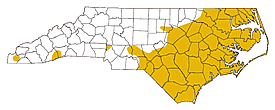
The shaded region represents the range of the eastern spadefoot in North Carolina.
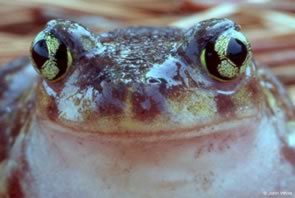
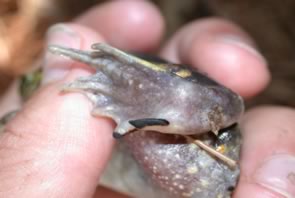
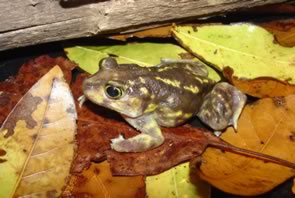
Notice the black "spade" on the hind foot used for digging.
Photo
by JD Willson
Photo by Aubrey M. Heupel
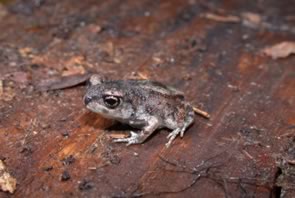
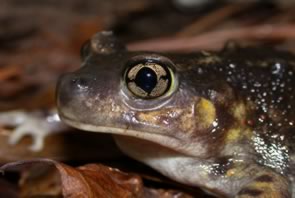
Photo by JD Willson
Photo by JD Willson
This website created by: Grant Connette and Evan Eskew.
For comments or questions contact M. Dorcas: midorcas@davidson.edu.
M. Dorcas homepage: http://bio.davidson.edu/dorcas
Davidson College, Davidson, North Carolina 28035-1719.
Text and maps from: Dorcas, M. E., S. J. Price, J. C Beane, and S. S. Cross. 2007. The Frogs and Toads of North Carolina. North Carolina Wildlife Resources Commission, Raleigh, NC. – Copyright by Michael E. Dorcas
Partial Funding for this website provided by a Associate Colleges of the South, National Science Foundation, and Duke Energy.
